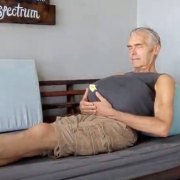 https://samahitaretreat.com/wp-content/uploads/2023/11/IMG_1290-2-scaled.jpg
1920
2560
Kirsten Mia
http://samahitaretreat.com/wp-content/uploads/2024/01/samahita-logo-v2.svg
Kirsten Mia2023-11-21 21:09:402023-11-21 21:09:40Music makes the world go round!
https://samahitaretreat.com/wp-content/uploads/2023/11/IMG_1290-2-scaled.jpg
1920
2560
Kirsten Mia
http://samahitaretreat.com/wp-content/uploads/2024/01/samahita-logo-v2.svg
Kirsten Mia2023-11-21 21:09:402023-11-21 21:09:40Music makes the world go round!Time Waits for No One!
“The two most powerful warriors are patience and time.” (Leo Tolstoy)
What IS time? How does it work? Can you create more of it? How much of it do you waste?
Time appears to move at different speeds, relative to our point of view. So, IS there really a past and a future?…
Our lives are inescapably affected by time and our understanding of it. Yet, we don’t fully know exactly how it works and what this means in our perceived reality. We can really only then navigate this life by what we CAN currently perceive: so, we work with “linear” time… In today’s article we look at what time is, how time, space, gravity and light are connected, and ways to prioritize our use of time, all while remembering to be in the NOW!
What IS time?
According to the dictionary, time is defined as the following:
- A nonspatial continuum in which events occur in apparently irreversible succession from the past through the present to the future.
- An interval separating two points on this continuum; a duration.
- A number, as of years, days, or minutes, representing such an interval.
The concept of time is intuitive and seems pretty straight forward to us as it is embedded in the fabric of society, and we are bound to it from the day we are born into the world. Time is the basis of how we have recorded life on Earth, our method of tracking how these moments relate to the present. For centuries, philosophers and physicists regarded time to be a constant, independent force, as if the whole Universe is governed by a single clock. That idea however, changed with Einstein’s theory of relativity in 1905.
Time is relative…
Time is not something we can see, feel or touch but yet it “exists”. Our entire lives revolve around time, planning for the future based on what we know about the past. Time was originally thought to be constant and separate from 3-dimensional space, until Einstein proposed that it was not time, but the speed of light that was constant. In 1905, Einstein introduced the theory of special relativity, the structure of spacetime. It is based on the following 2 hypotheses:
- The laws of physics are the same for all observers in any inertial frame of reference relative to one another (principle of relativity).
- The speed of light in a vacuum is the same for all observers, regardless of their relative motion or of the motion of the light source.
From 1907-1915 he developed the theory of general relativity (gravitation), which relates the curvature of spacetime with mass, energy, and any momentum within it.
Some of the effects of general relativity are:
- Gravitational time dilation: Clocks run slower in deeper gravitational wells.
- Precession: Orbits behave in a way unexpected in Newton’s theory of gravity. (This has been observed in the orbit of Mercury and in binary pulsars).
- Light deflection: Rays of light bend in the presence of a gravitational field.
- Frame-dragging: Rotating masses “drag along” the spacetime around them.
- Expansion of the universe: The universe is expanding, and certain components within the universe can accelerate the expansion.
Then came the development of quantum mechanics, a physics theory that provides a description of the physical properties of nature at the scale of atoms and subatomic particles (photons, electrons, neurons, quarks). Here, space-time is just a background, a stage, a floor, a container for all the interesting interactions that make up the physics of the universe…
Be in the NOW!
So as you can see, at face value, time is a little more complicated to understand. The continually developing worlds of science, physics, quantum mechanics, cosmology and technology will always keep turning, learning, unlearning and proposing ideas, theories and discoveries. As interesting and exciting as it is, how much of these things affect us on a day-to-day basis? We don’t have much control at all over the past or future, so instead of worrying and stressing about these things, filling up the mind with unnecessary thoughts, let’s focus our energy on things that REALLY matter. Let’s prioritize our time so we can make the best out of our 1 precious life!
Ways to prioritize, plan, do your best and leave the rest:
- Determine values: trust your intuition, what will add value and what will bring problems.
- Make lists: Get it down on paper and keep revising them as you go.
- Be flexible: Things are always changing, not everything is within our control.
- Have dreams, set goals: Have something to aim at or we can waste a lot of time going in circles. Make sure they are realistic, measurable, achievable and adaptable…
- Evaluate outcomes: Consider the impact of your actions, short and long-term.
- Be mindful not mind-full: Practice meditation and breathwork to stay calm and present.
Visit Samahita to learn how!
Having gained further insight into the magic of the Universe, time and things beyond our current understanding, we can hopefully worry less about how it all works and be more in the moment! Do what you can, there will be enough time, IF you can prioritize and manage it well, let go when needed. Find solace in the unknown.
Till next time, have a great day ahead!
xo Kirst
More from the Samahita Blog







